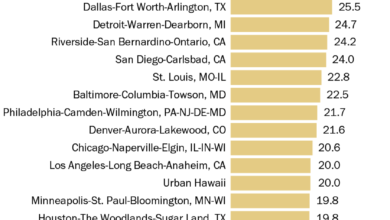U.S. Homeownership Rates in 2024: State and City Breakdown

The United States homeownership rate currently stands at 65.2%, while renter-occupied housing units account for 34.8% of the national housing stock, reflecting an ever-evolving dynamic.
The U.S. homeownership rate reflects the proportion of occupied housing units owned by their residents. Currently, 65.2% of housing units are owner-occupied, while renters account for the remaining 34.8% of the housing market.
Various factors, including economic conditions, wage trends, rising home prices, lifestyle preferences, and generational shifts, play a crucial role in shaping the dynamics of homeownership. Over the years, these influences have caused the homeownership rate to fluctuate, reflecting the evolving nature of the housing landscape.
Homeownership rates in the United States vary widely by state, influenced by factors such as migration trends, population density, housing availability, local economies, educational opportunities, and lifestyle preferences. At a more granular level, homeownership percentages also differ significantly by city. Many large, vibrant urban centers have experienced notable declines in homeownership rates in recent years.
Coastal and southern states have seen sharper decreases in homeownership compared to landlocked states, with populous urban hubs like New York and California particularly affected. In contrast, states with lower population densities and housing costs below the national median often report higher homeownership rates.
Homeownership Rate by U.S Cities
Homeownership rates can vary significantly between cities, even those located close to one another. This disparity is influenced by numerous factors, including economic conditions, employment opportunities, educational resources, population density, migration trends, housing prices, and the pace of new development, among others.




